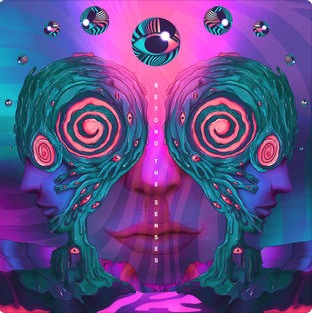Hello World!
Happy New Year’s everyone! This is the first development blog post for Mondradiko, and I’d like to go over the current state of the project, as well as where it’s expected to head in the near future.
Where are we now?
So far, we’ve accomplished a lot on the infrastructure of the engine. We have an Entity-Component-System (ECS) world, as well as basic network communication and sychronization, and a rudimentary binary asset system. We’ve also successfully ran Mondradiko on a VR headset (HTC Vive on Linux with Monado).
Next Steps
Development on the engine has been picking up in speed substantially, because of the time invested building the framework for it. In the next several months, we can expect a lot of features to come to fruition:
Windows/Quest Builds
At the moment, Mondradiko only builds on Linux, meaning that for most people, you won’t be able to run it yet. Getting it to build on Windows, as well as on Oculus Quest, is an essential goal, and we’re making it a priority.
WebAssembly
We’ve picked out WebAssembly (Wasm) to be the main scripting environment for Mondradiko. This may seem like a strange choice at first, but we have several reasons:
- Wasm is sandboxed, meaning guaranteed safety
- Wasm is fast and JIT-compiled
- Wasm is compact, for smaller script asset sizes
- Wasm is popular and well-documented
- Content creators have lots of language options
Another very important feature of Wasm is that it’s very low-level, and memory is linear. Local script data can be backed up and synchronized over a network connection very easily, meaning that scripts are agnostic to if they’re running on the client or server. For anyone that’s written game netcode before, this is very convenient!
All of these features of Wasm make it a very appealing option for a scripting environment, especially when considering that Mondradiko has a lot in common with a typical web browser. Users download online content that is ran locally on their computer, and they must be safe from malicious code, while content creators should have an enviroment that is easy to work with and portable.
We’re integrating Wasmtime as the WebAssembly runtime at the moment, as well as creating a process for building C++ bindings to write scripts with. In the future, we may also generate bindings for Rust, or any other language that can target Wasm.
Customizable User Interface
A major design goal for Mondradiko is that the user will have complete control over the design of their user interface, from everything from local settings menus, to describing the client-side appearance of a server’s menu layouts.
To do this, we’ll be using UIML for high-level layout descriptions, and writing WebAssemebly bindings (separate from script bindings!) to define how UI elements are rendered and interacted with. This will give the user a huge amount of control over what they can do with their custom UI.
The Mondradiko client will come with a variety of UI presets for the user to choose from, but they will also be able to download premade UI configurations from online. Hopefully, a community of UI designers will spring up!
Text/Glyph Rendering
An important feature for Mondradiko to have this early on is a text rendering system. This will be done by baking font files into GlyphSetAssets, and rendering the text from those glyph sets using signed-distance field (SDF) techniques, as popularized by Valve.
This is very VR-friendly, as no low-resolution fuzziness is visible as the user moves their view closer to the rendered text. It is also very useful for rendering complex UI elements, without having to process and store the polygonal geometry for those elements.
Avatar Rendering
Mondradiko uses VRM for its avatar format. It’s undetermined at this time how exactly VRM models will be distributed to clients, but the current options are to download them from a third-party source (such as VroidHub or ReadyPlayerMe), or to download and upload user avatars to the world server, either directly or through a Matrix room’s file storage. We’ll be discussing how this works, as well as Matrix integration, in coming months.
Timeline
January
For January 2021, we’ll try to get these things done in this order:
- C++ scripting API
- Asset system and mondradiko-bundler overhaul
- Entity prefabs
- Rudimentary UI
- PBR shading
Get ready for more blog updates on these features as we develop them!
February and After
- CVAR system
- Launcher and release version control
- Build for Windows/Quest
- Avatar loading and rigging
Community
We’ve set up a YouTube channel, where we’ll post video devlogs in coming months. Please subscribe!
We also have a Discord server, which is where all dev discussion takes place. Feel free to join and say hi!
Opportunities for Contribution
Design
Suggestions
Any ideas or suggestions for Mondradiko are welcome! Please join our Discord server, where I and the other developers are active, and drop any thoughts you have. As a potential future user, your opinions are important.
Funding
If you’d like to help support the development of Mondradiko, please become our patron on Patreon! A large part of Mondradiko’s development relies on cloud services to function, such as automated builds, testing, and packaging, along with hosting the world servers themselves. Anything helps!
Programming
If you have any coding experience, either from making games in Unreal Engine or Unity, or low-level C++ programming, we need your help!
Please join the Discord server to get in touch with the project maintainers and discuss the work needing to be done.
